“You have to go to Scotland at all times of the year – in order to appreciate the times when the sun does come out.”
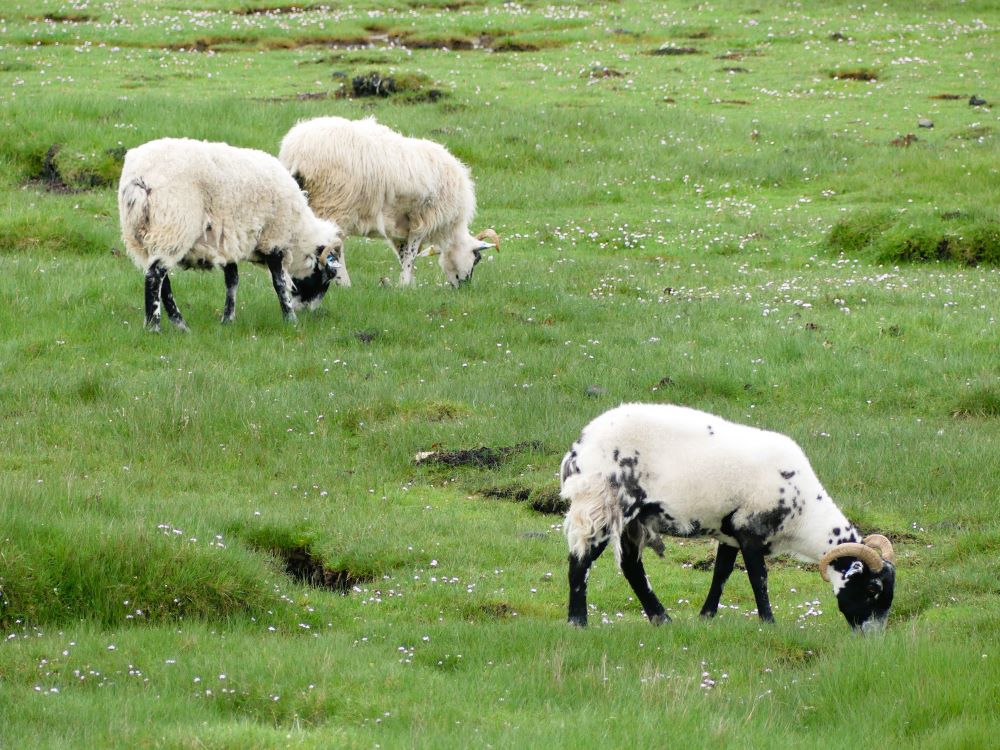
Bill Bailey, musician and comedian
Loch Ness, Culloden Battlefield and Inverness
Loch Ness. Nessie. Legendary aquatic monster. We begin our search for her, but first, along the way, we’d fall madly in love with some gentle giants, the Highland Coos … also known as Highland cattle, a Scottish breed of rustic beef cattle.
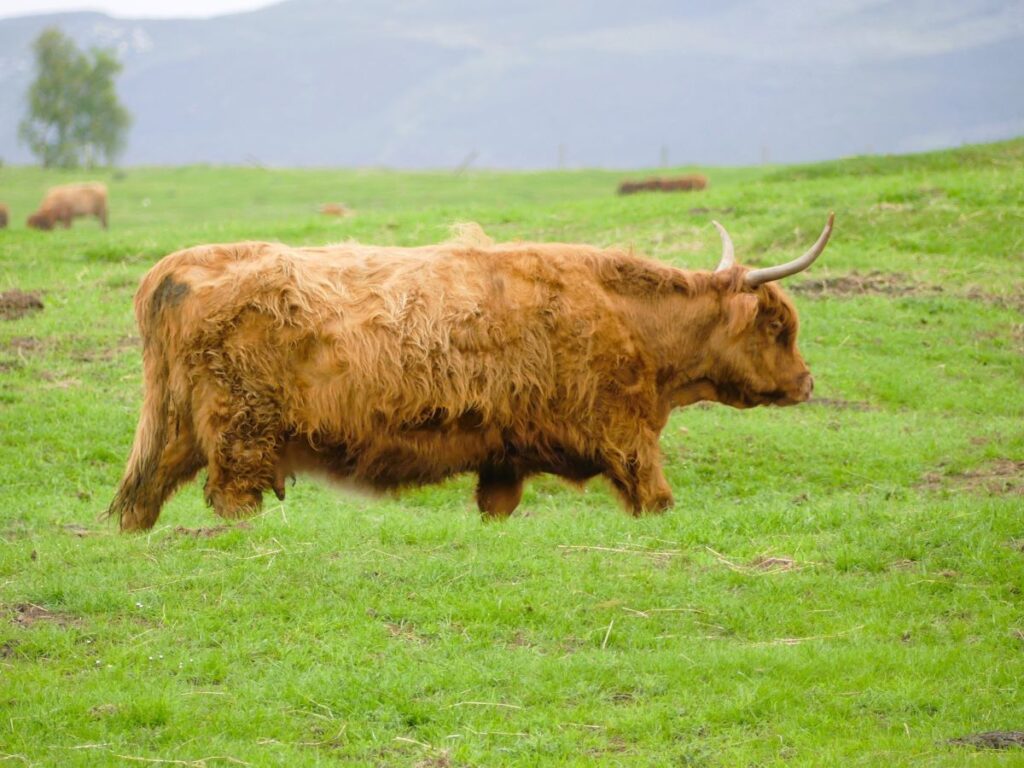
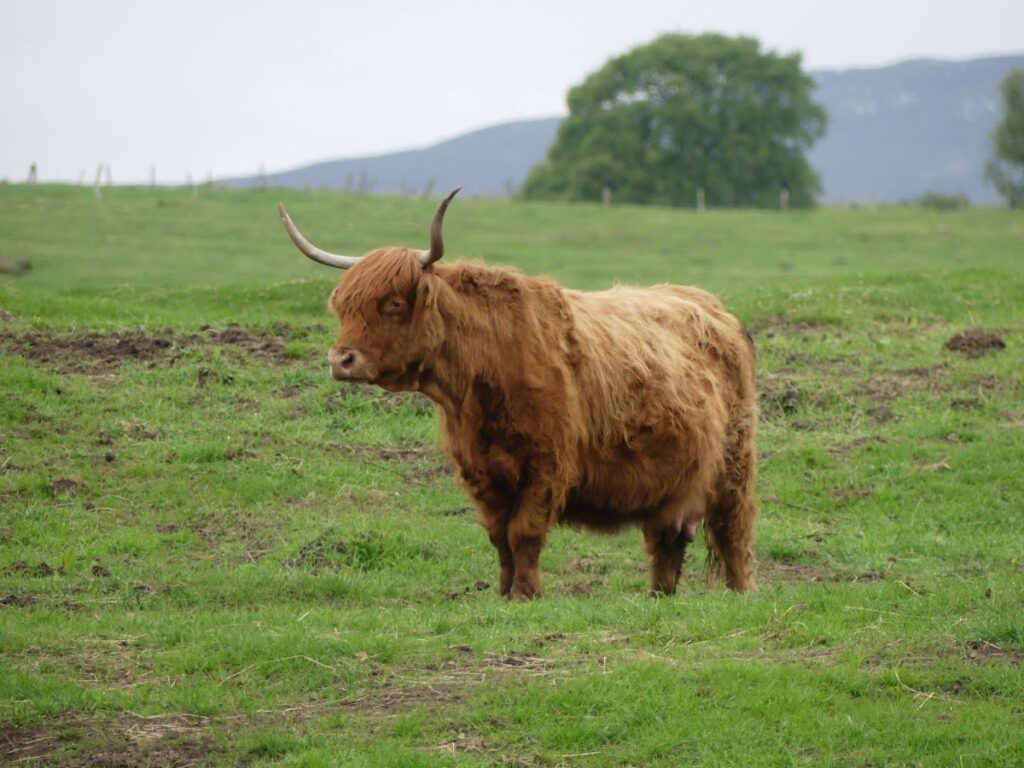
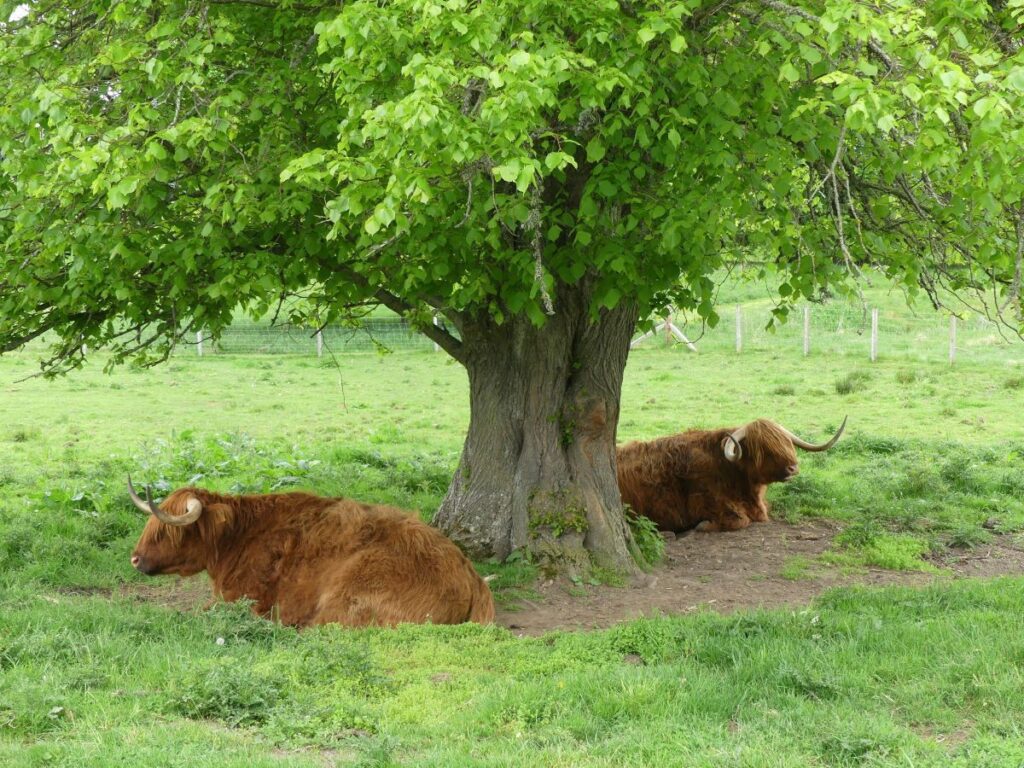
Highland cattle have been bred in Scotland for centuries, with origins dating back to the 6th century. They’ve got a lifespan up to 20 years.
The Coos are an iconic symbol of Scotland; frequently appearing in art, literature and glamorized in promotional materials. You can’t help falling for these warm and fuzzy creatures. You just want to nuzzle your nose in their soft, woolly fur coat.
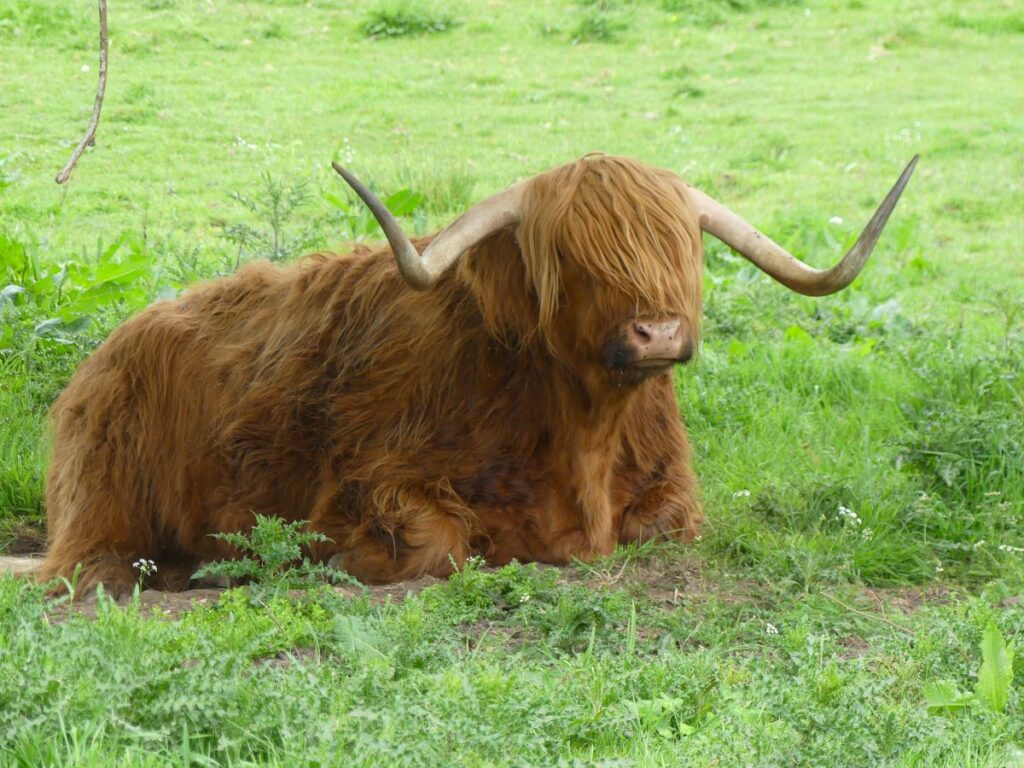
They’re distinctive for their long horns and long, shaggy coats, which can be red, ginger, black, dun, yellow, white, or grey. Any which way, they’re downright adorable.
Their double-layered coat helps them withstand harsh weather conditions. The outer layer is oily and water-resistant, while the warm undercoat is soft and fluffy for insulation.
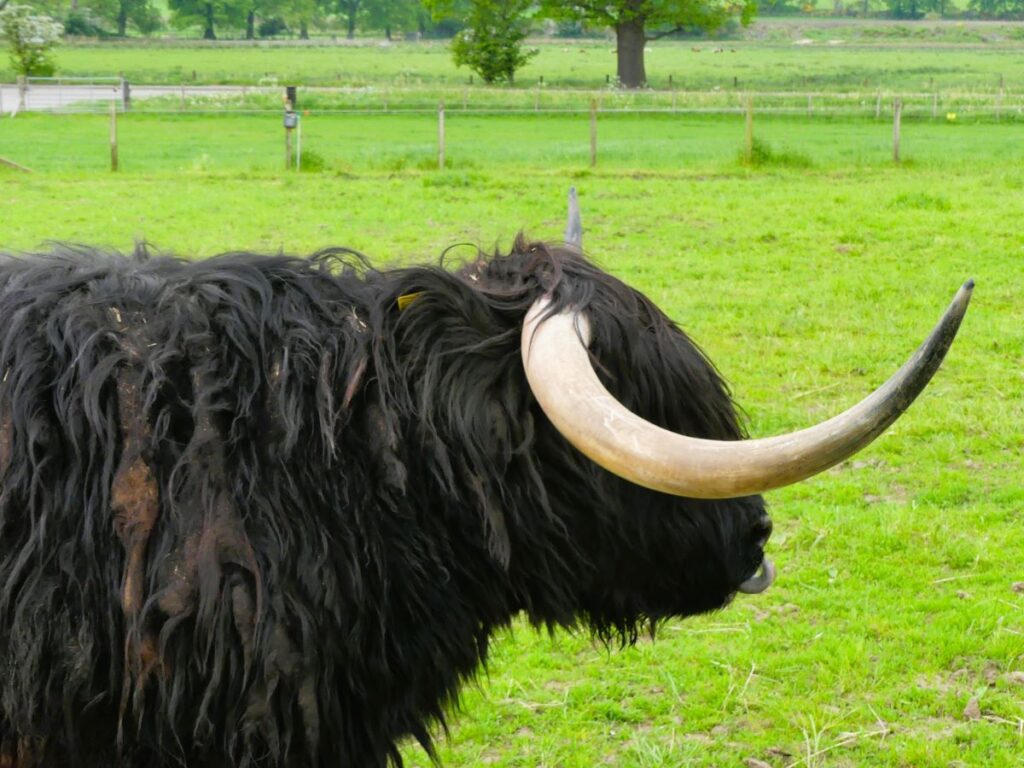
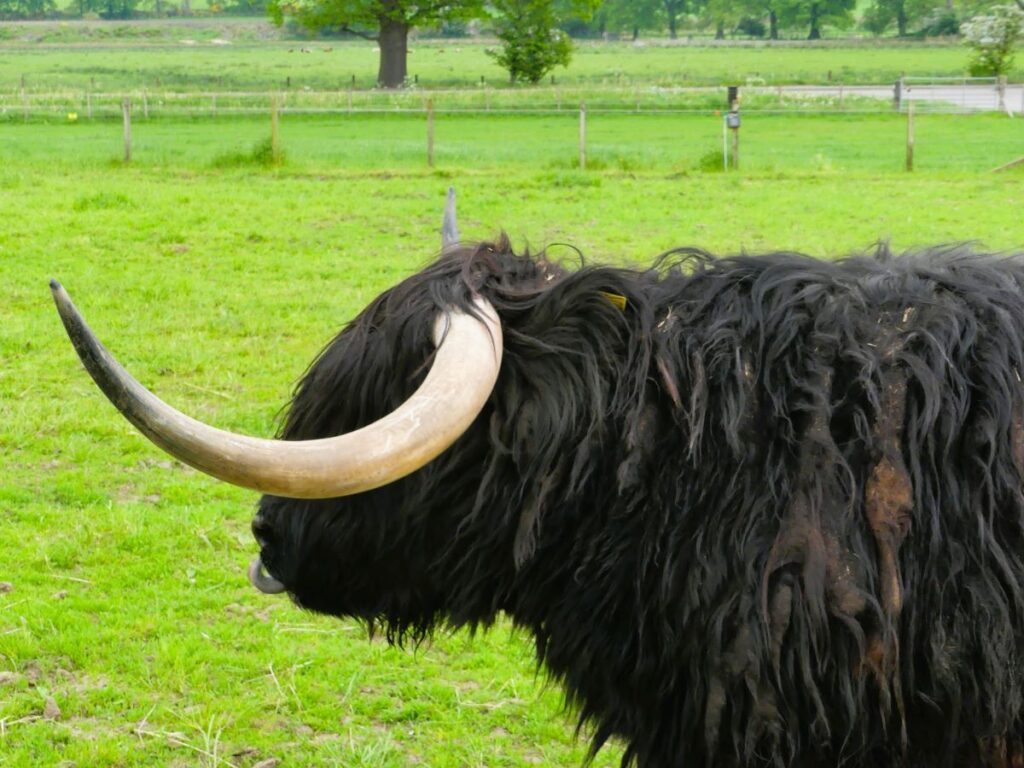
Despite their formidable appearance, Highland Coos are known for their gentle and docile nature. They’re curious and social animals which makes them a popular choice for small-scale farming, and as attractions in rural and agricultural tourism. Many are kept as pets, and I’d want one (or two) Coo, too.
With continuing Coo sightings, we almost missed our boat excursion at Loch Ness; for every time we came upon them grazing in a field, we had to stop and gape and observe them.
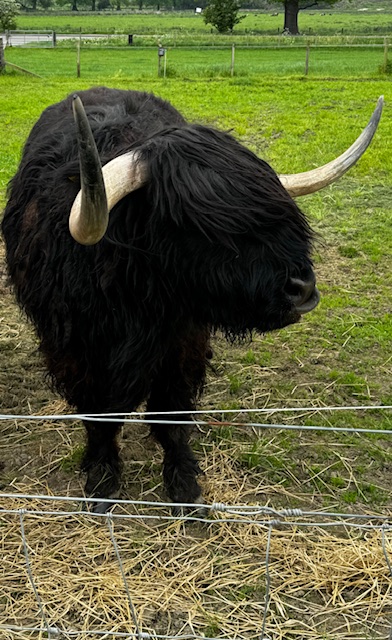
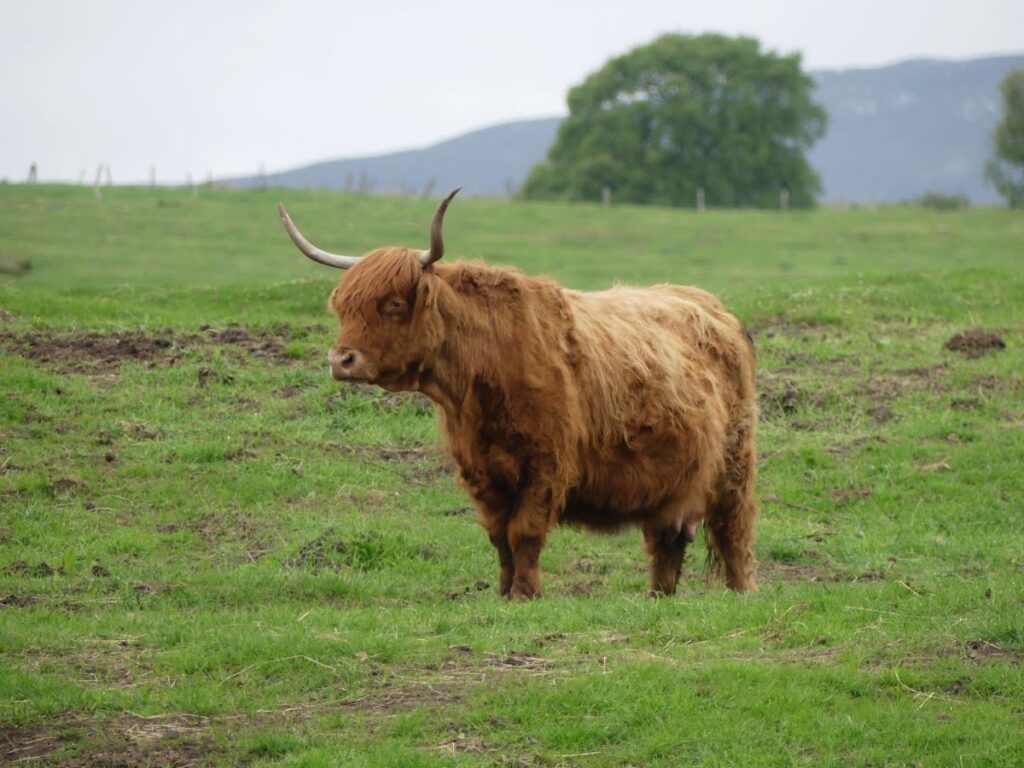

And they know they’re cute, too – some had attitudes, like, “Please, take your picture from this angle – it’s my best side!” What an amazing, beautiful beast. And fortunately, we made our boat sailing in the nick o’time.
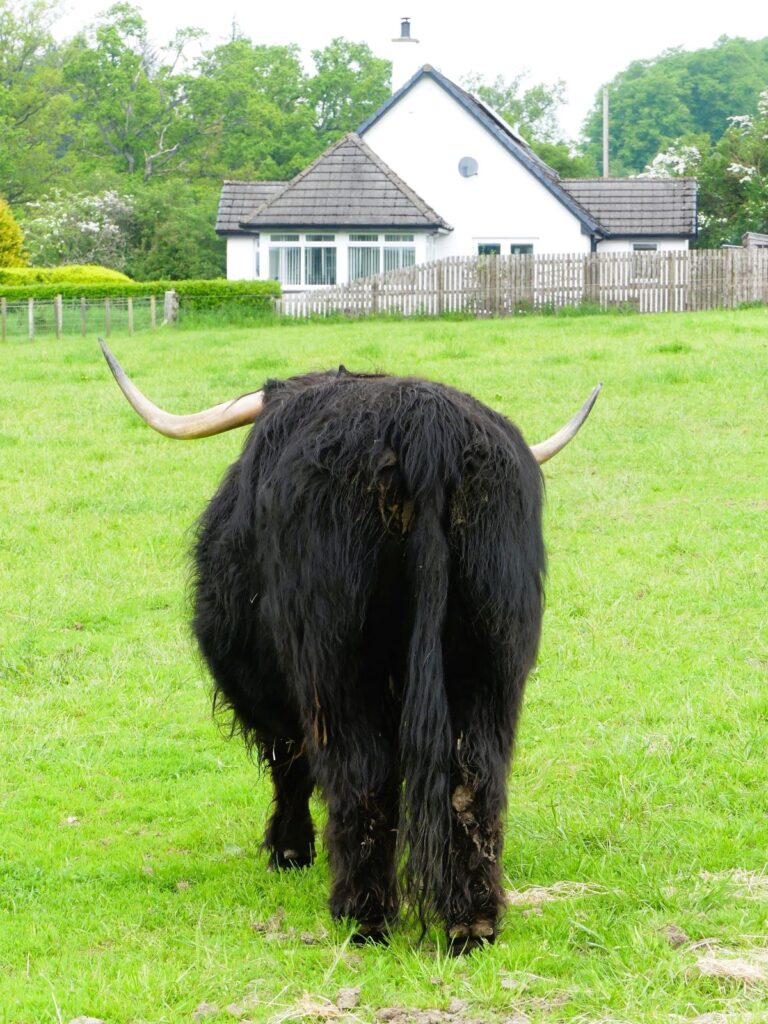
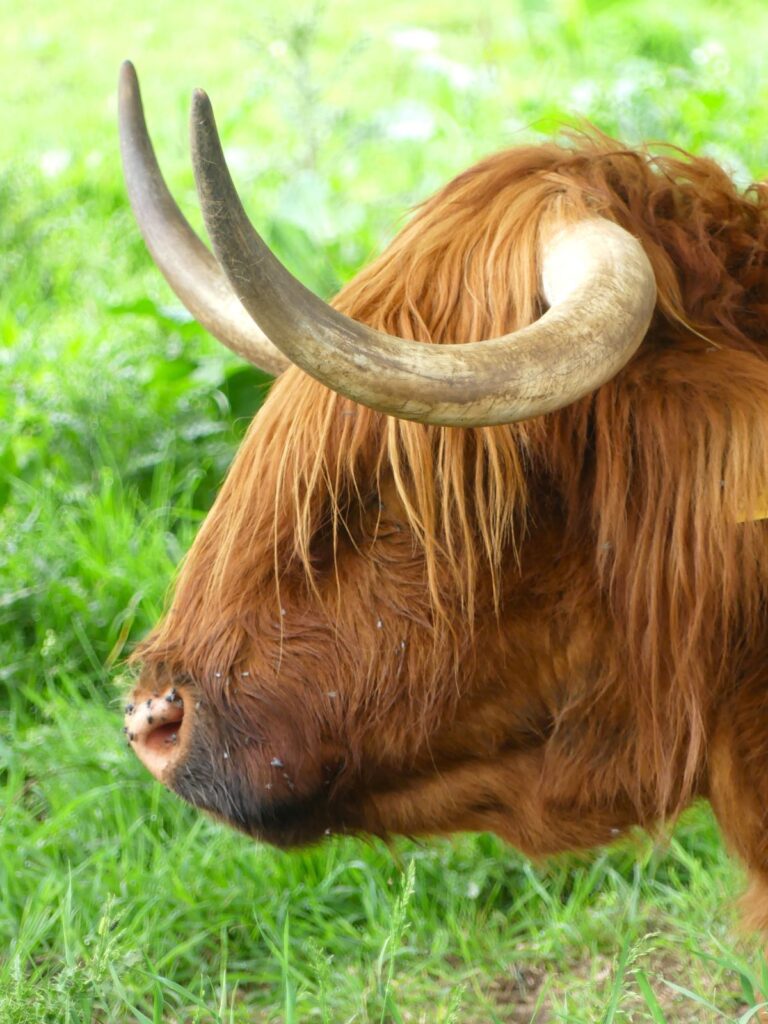
Loch Ness
While visiting Scotland, searching for the elusive Nessie isn’t necessary, but makes for a fun and informative adventure. Besides, I’ve always been fascinated by the infamous Loch Ness monster’s legendary folklore.
Our land tours have provided breathtaking views of the countryside, but it’s time to see it from the water. So, here we are, on a boat tour, adding ourselves to the endless search.
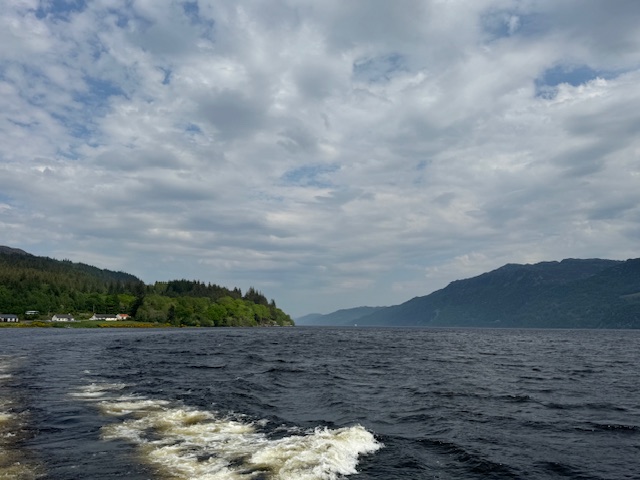
The legend of Nessie dates to ancient times, with modern interest sparked by a supposed “sighting” in 1933. Various expeditions and investigations have been conducted, but no conclusive evidence has ever been found.
Interestingly, it turns out that our tour guide’s talk on the statistics of Loch Ness was way more interesting than a mythical creature. Just the facts:
Loch Ness, is a large, deep freshwater loch that extends southwest of Inverness for approximately 23 miles (37 kilometers) and about 1 mile (1.6 kilometers) wide.
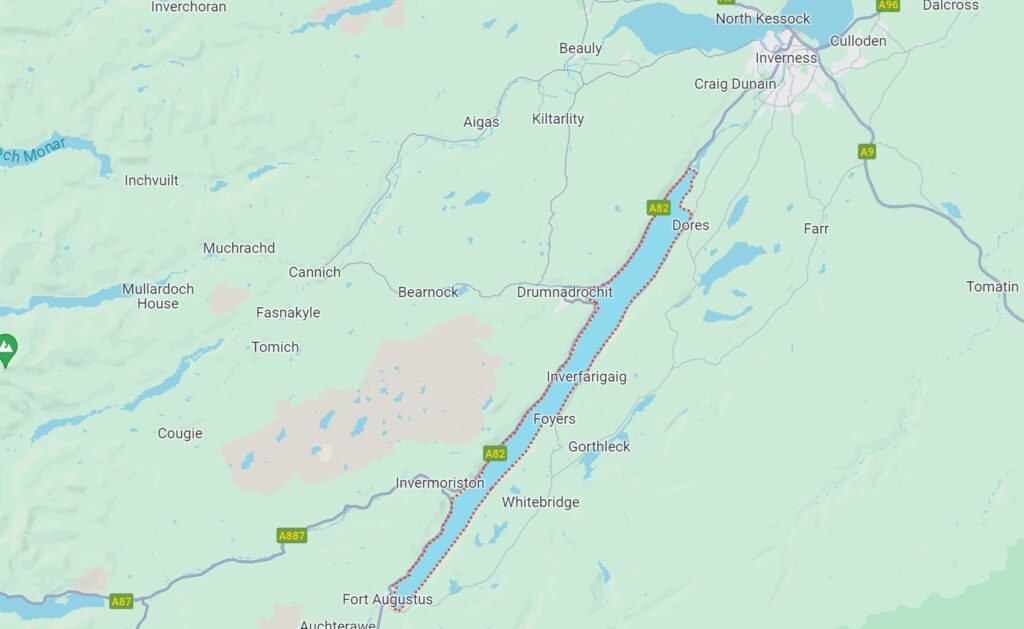
It’s one of the deepest lakes in the British Isles, with a maximum depth of about 755 feet (230 meters); containing more fresh water than all the lakes in England and Wales combined.
The loch’s water is extremely dark and murky due to the high peat content from the surrounding soil. This reduces visibility underwater, making it difficult for divers and sonar equipment to explore its depths.
Loch Ness is part of the Caledonian Canal, which connects Scotland’s east coast at Inverness with the west coast at Corpach near Fort William. The canal, completed in the early 19th century, allows boats to conveniently travel across Scotland without having to navigate around the northern coast.


The loch maintains a constant temperature throughout the year, averaging around 42°F (6°C) to 46°F (8°C); due to its depth.
So, at the end of his talk about the legend, history and geography of the lake, our guide mentioned that there were Nessie stickers on the boat’s windows, and if we used a proper angle, then voilà ~ a picture of Nessie can be yours!
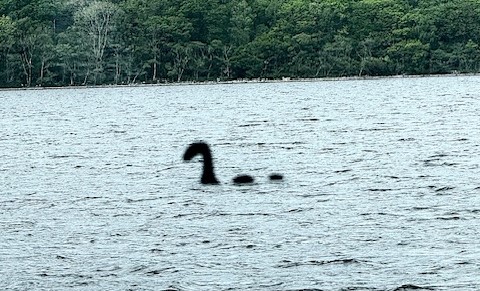
Inverness
The city of Inverness (pop. 47,000), is often referred to as the “Gateway to the Highlands.” Inverness, in Scottish Gaelic: Inbhir Nis, meaning “Mouth of the River Ness,” is regarded as the capital of the Highlands, as it’s the administrative center of the Highland council area.
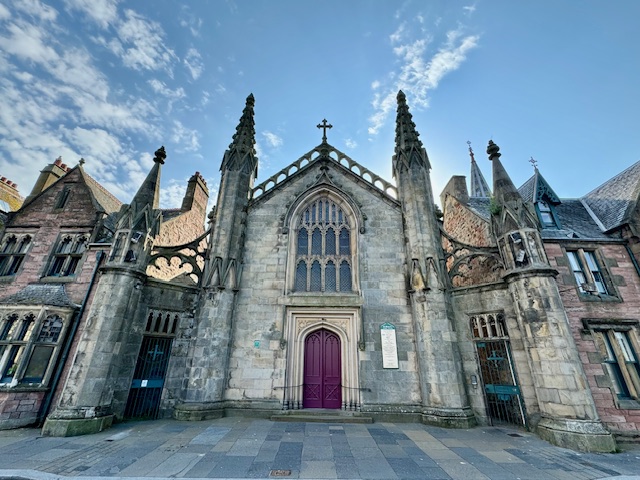
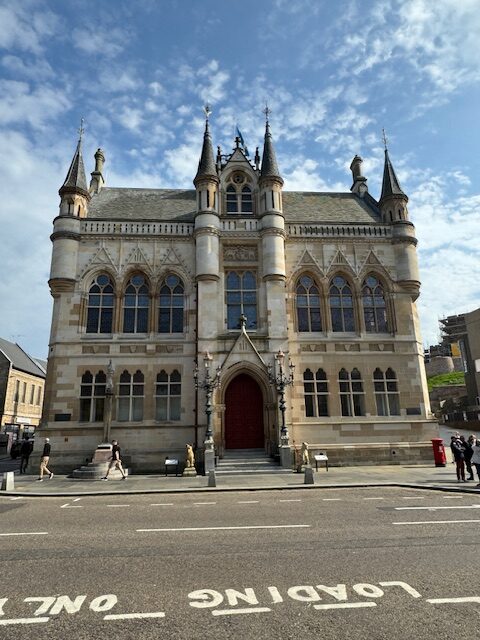
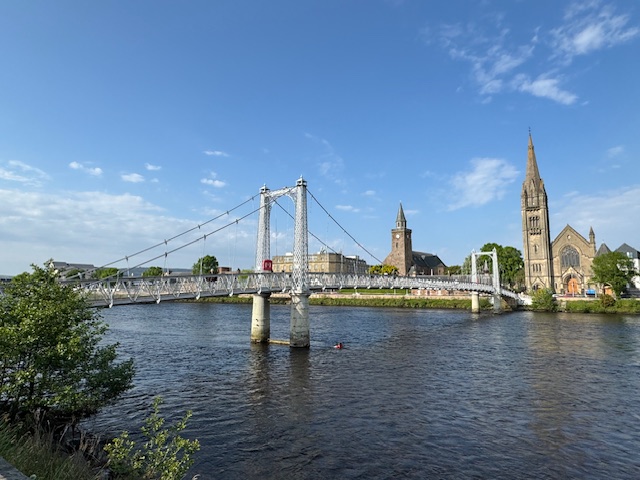
Inverness has a rich history dating back to ancient times. It was originally a Pictish (ancient inhabitants of Scotland) stronghold and later became an important medieval market town. It’s the northernmost city in the UK, and is known for its historical significance, vibrant culture and scenic surroundings.
Top reason for visiting Inverness is David’s “Outlander” fandom. It’s centrally located to many historic sites and we’ve signed up for a day tour of the region.
The Battle of Culloden
Up until now, we’ve experienced Scotland history through its castles, museums, and through its whisky distilleries. Now we’ve come upon a landmark battlefield for a truly immersive, outdoor “living museum.” Here’s where we got a true sense of the living, breathing, dramatic history of the Scots.
The momentous Battle of Culloden, fought on April 16, 1746, marked the end of the Jacobite Rising of 1745. It was a decisive conflict between the Jacobite forces, led by Charles Edward Stuart (Bonnie Prince Charlie), and the British government troops commanded by the Duke of Cumberland.


Today, Culloden Battlefield is a preserved historic site managed by the National Trust for Scotland. The modern visitor centre features exhibits, interactive displays, and a film that recounts the events of the battle and its historical context. The centre also provides genealogical resources for those tracing their ancestry.
The impactful 360-degree film is presented to help re-imagine the battle and immerses you into the heart of the action, offering a very moving, stirring experience.
Note: fyi … “Outlander’s” intense, gruesome and fairly accurate portrayal of the battle can be seen in season 3/episode 1.
Outside the building, at one end of the wall a stone protrudes from the wall for each Jacobite man killed (approx. 1,250); then a dividing section separates the other end of the wall for a protruding stone for each Government man killed.
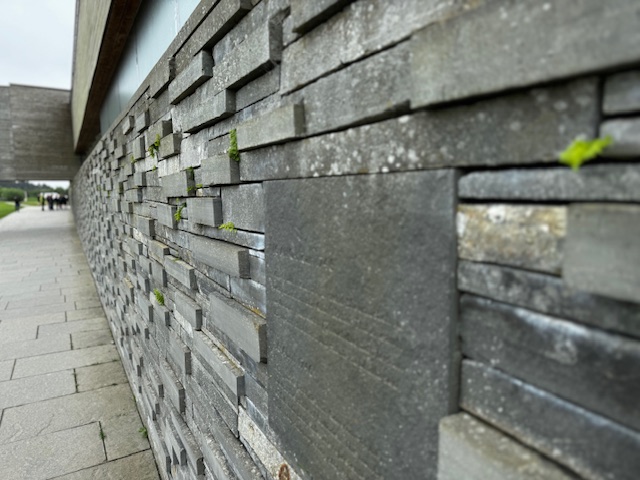

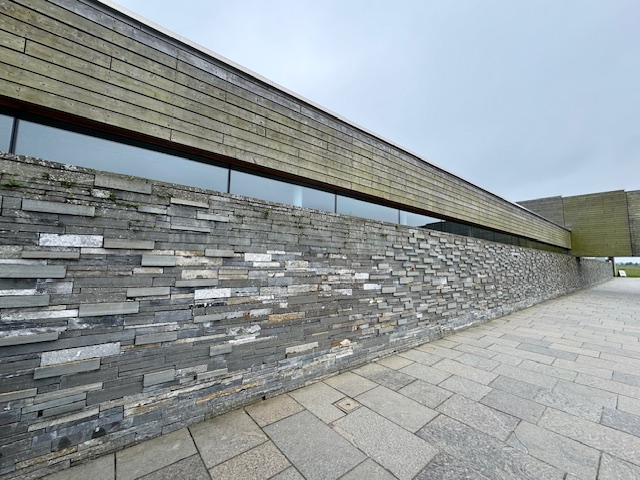
The Jacobite Rising aimed to restore the House of Stuart to the British throne. The Bonnie Prince, grandson of the deposed King James II of England and VII of Scotland, rallied supporters in Scotland and marched into England, hoping to garner support for his cause..
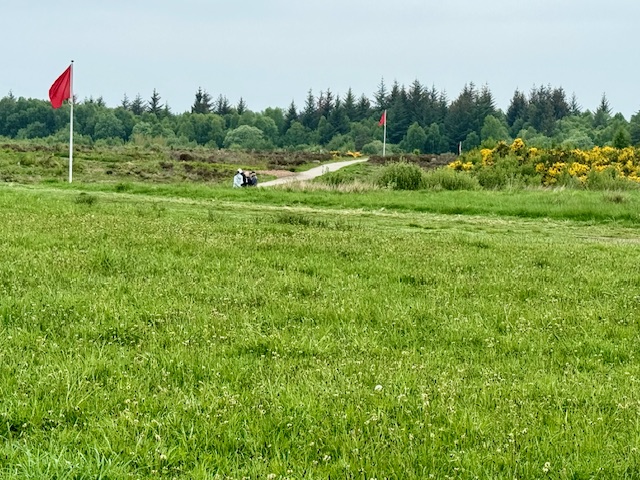
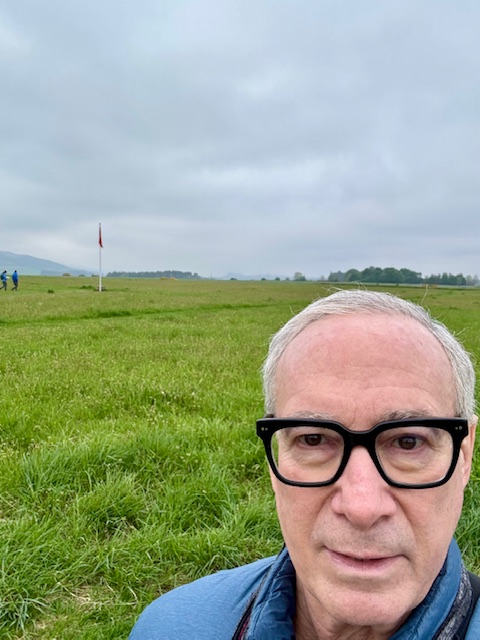
The battlefield, Culloden Moor, is a flat, boggy area that disadvantaged the Jacobite forces. They were far outnumbered by the well-trained, well-equipped British troops. Fighting was brief, lasting less than an hour; resulting in a devastating defeat, and ending the Jacobite cause.
The government forces pursued the fleeing Jacobites, and harsh reprisals followed, including executions, imprisonments, and the destruction of the Highland way of life. The British government enacted laws to dismantle the clan system and suppress Highland culture. Scottish life changed on a dime on that fateful day.
We would follow along paths in the Moor, where markers and flags denote key locations, and positions of each side. This gave us a visual aid in how the two sides faced-off.
Scattered about are haunting memorial cairns and gravestones for fallen soldiers, showing where a clan member was befell. The Clan Fraser stone marker was a popular photo stop because of its connotation for the main character, Jamie Fraser, in “Outlander.”
It was all so chilling and moving. The Memorial Cairn, erected in 1881, commemorates the battle and the lives lost. The Cumberland Stone marks where the Duke of Cumberland directed the battle.
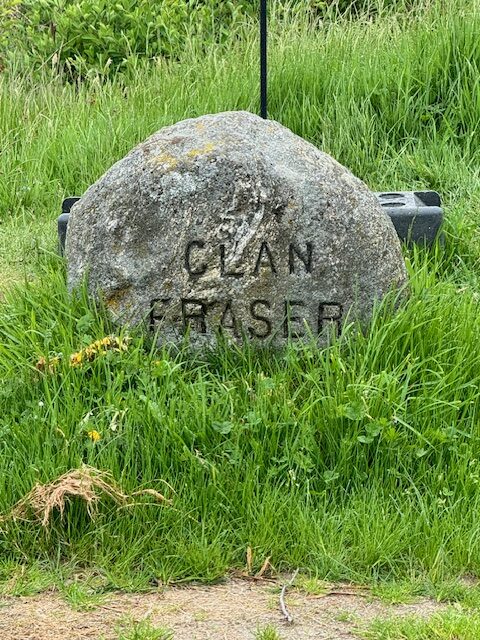

Culloden Battle is remembered as the last pitched battle fought on British soil, and marked a turning point in Scottish memory and cultural identity. It led to the integration of Scotland into the United Kingdom and significant changes in Scottish society. One can’t help but be absorbed into this monumental memorial.
Leanach Cottage – During the battle, a similar cottage stood on this spot and served as a field hospital for Government soldiers. It subsequently fell into disrepair and was rebuilt in the early 1800s. In the 1960s, the cottage became the first ‘museum’ at Culloden Battlefield. Today, Leanach Cottage houses temporary exhibitions relating to the battlefield.

Clava Cairns
Clava Cairns a fascinating prehistoric site just five minutes from the battlefield. It’s a well-preserved example of a Bronze Age cemetery complex, dating back around 4,000 years.
Cairns are stone markers built as a memorial and burial monuments. There are three main cairns situated here, each surrounded by a circle of standing stones. They’re chambered, meaning they have internal burial chambers where bodies or cremated remains were placed.
The site is open to the public to wander about its grounds, soaking in ancient history and archaeology. Clava Cairns offers a unique glimpse into the burial practices and beliefs of Scotland’s peoples of long ago.

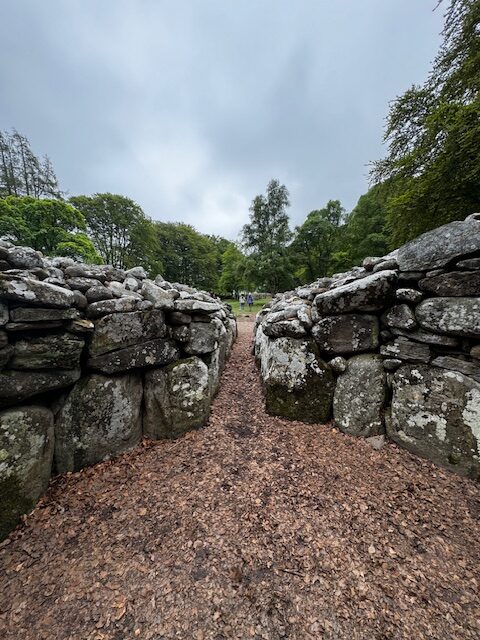
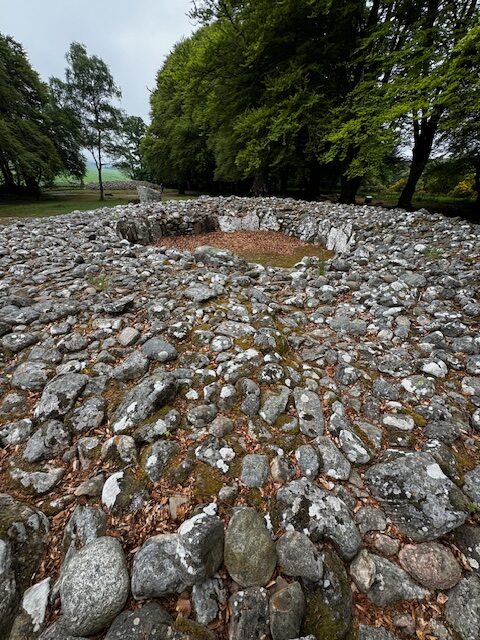
Passage Graves: two of the cairns are passage graves, where a central burial chamber is accessed by a narrow passage aligned with the midwinter sunset.
During the winter solstice, these passages are aligned with the setting sun, suggesting that the builders had a deep understanding of astronomy and used it in their burial practices. It’s a sort of Stonehenge-like set-up, but flatter.
The famous “Outlander” stones, the fictional “Craigh na Dun” were inspired by Clava Cairns, though it doesn’t have the same structure as shown in the series.
Leaving this compact area brought to mind how much history was played out here and left us with more memorable images.
River House
Lucky for us, we booked in advance a reservation at this sensational riverfront seafood restaurant, top in Inverness. River House is an intimate, charming and cozy restaurant.
A big RELAX sign greets you at the door. Perfect reason to start off with glasses of Prosecco to unwind; accompanied by savory Sicilian green olives in which to get our palates excited.
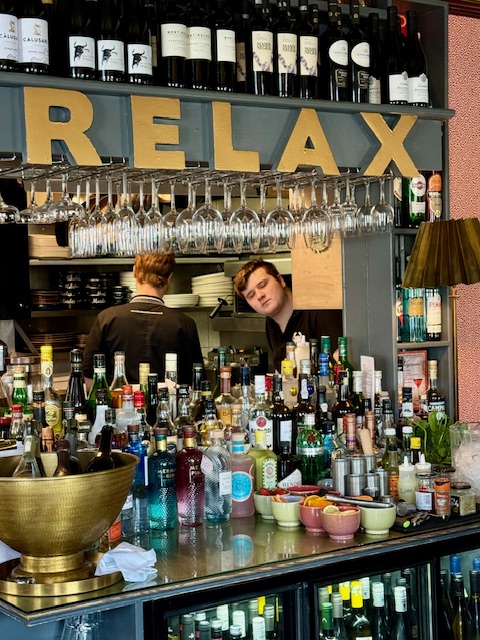
We wined and dined ourselves silly and stuffed as much seafood into our bellies as possible: Scottish oysters w and fried sardines would begin us on that path.

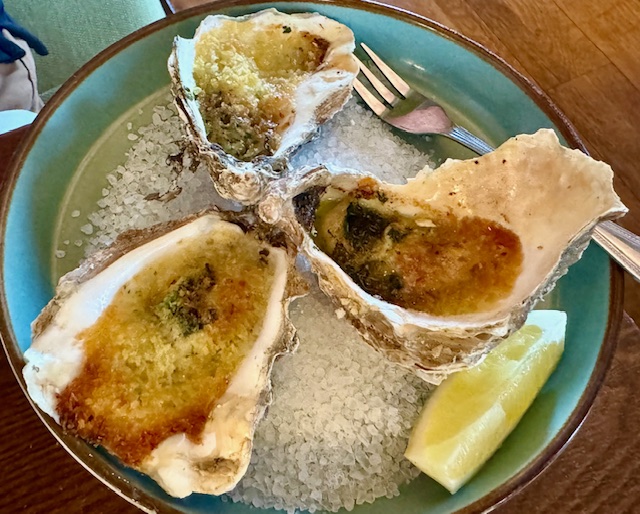
Cullen Skink – Traditional and hearty soup of smoked haddock, leeks, potatoes and cream.
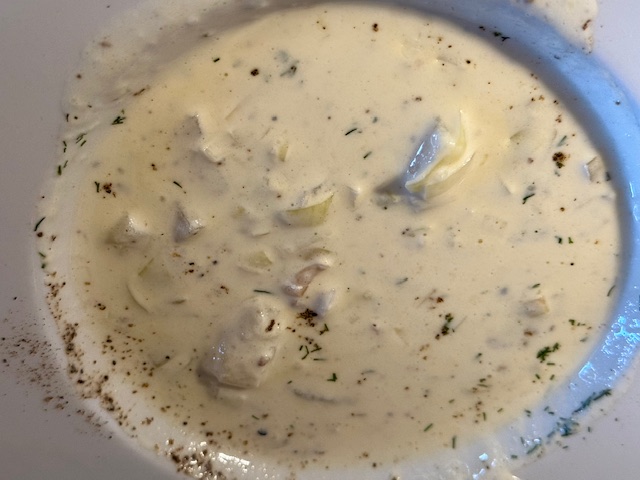
Seafood Linguine – King prawns, clams, scallops and mussels tossed with heritage tomatoes, spinach and fresh linguine in a garlic, chili and lemon olive oil.

Lemon tart with fresh Scottish raspberries and raspberry ripple ice cream provided a puckery, fresh finish.
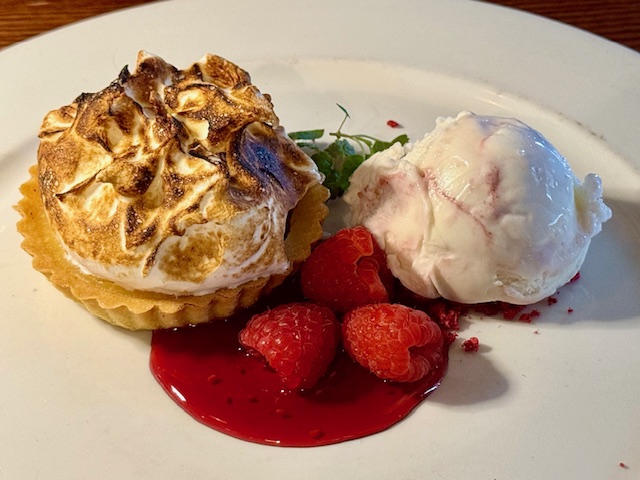
As seen around town…..
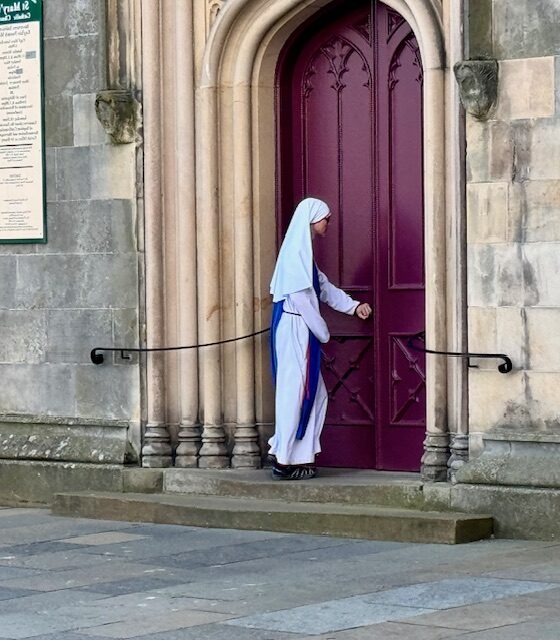


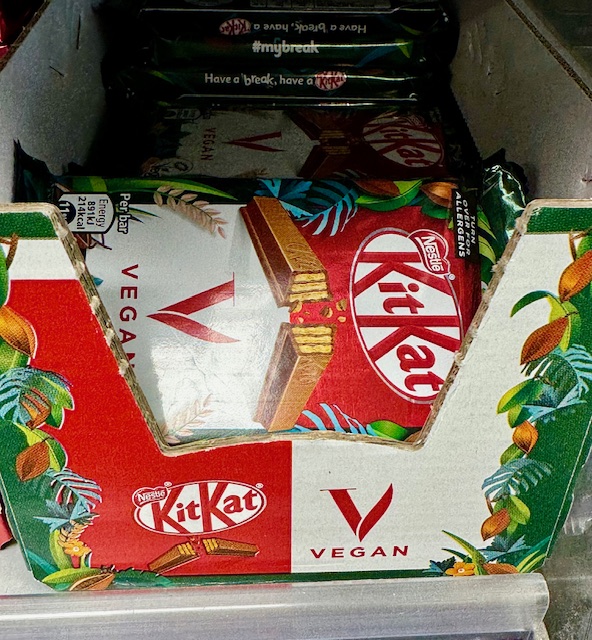
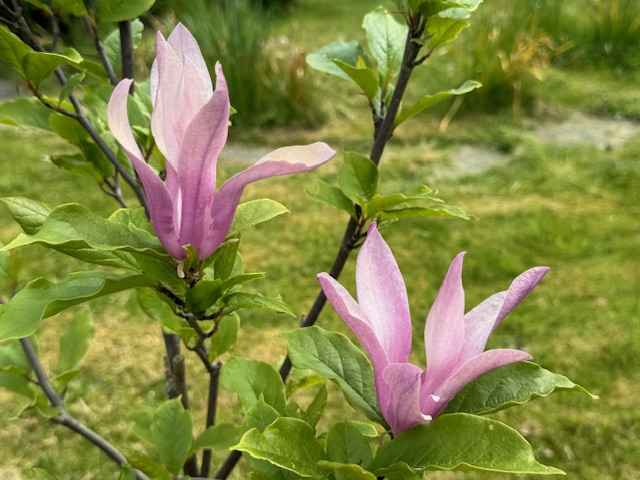
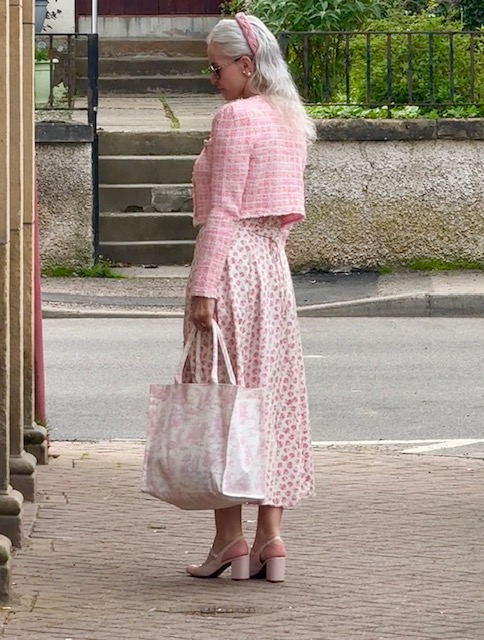
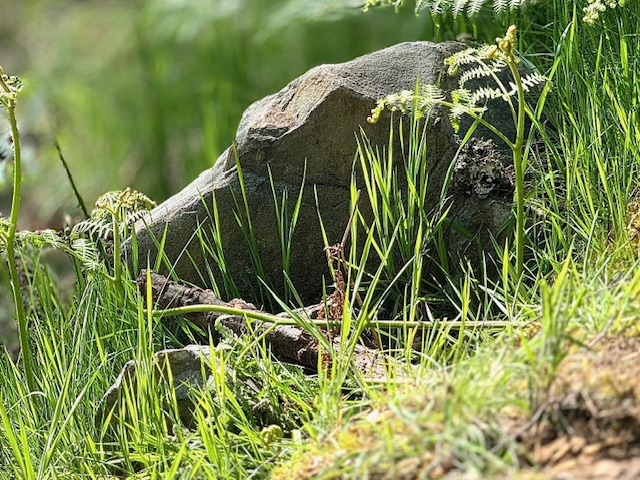
Tomorrow, it’s tea with the King!
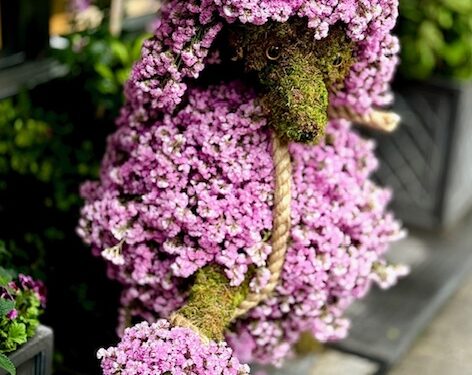
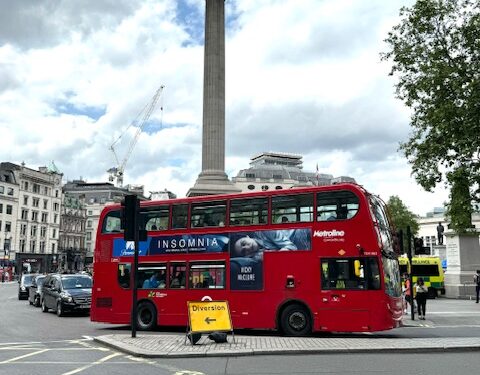
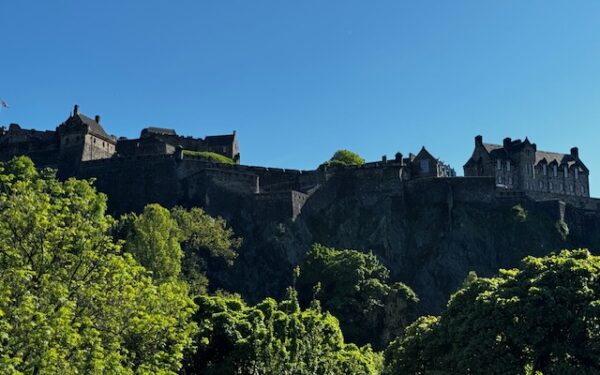
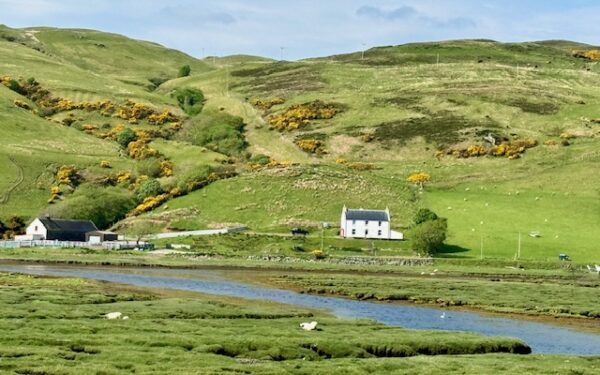
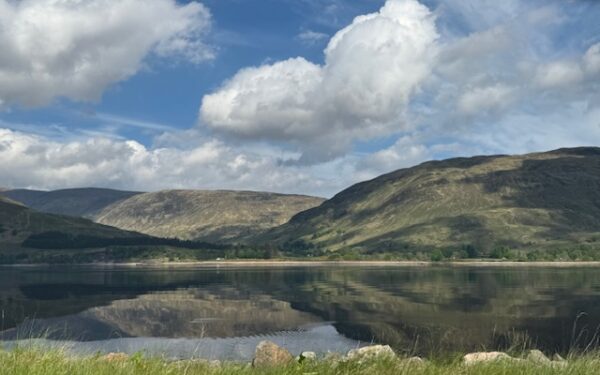
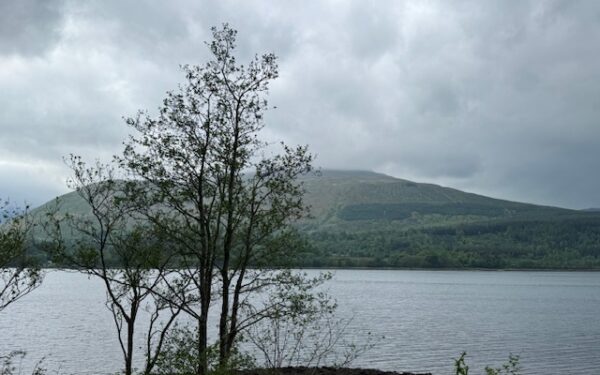
A seafood feast!!!!
Quite a comprehensive description of this part of Scotland. I enjoyed your whole account, and especially your photos of the Highland Cattle; I had never seen a black one before! We loved Inverness! The history of the region is very interesting and you covered it very well, including the Outlander tie-in. Thanks!
What? No Nessie?? Now you have the perfect excuse to return.
Highland Coos! You are correct. Adorable! Coos prints you purchased are sure to bring a smile every time you pass by them. Photo of where you chose to hang them, please.
Inverness. After seeing so many shots of historical Inverness on Outlander, it would be of special interest to tour the city. David probably identified many of the sites.
Battle of Culloden. Another sad reminder of a fiercely proud people losing not only a battle, but life as they knew it. Leanach Cottage—quintessential Scotland. Nice shot! Fascinating that 4,000 year old Clava Cairns burial chambers is made up of the stones that inspired Outlander’s fictional Craigh na Dun stones.
River House looked like the perfect end of day destination restaurant. Fabulous photos. Cullen Skink and Seafood Linguine looked delish. What I would give for that Lemon Tart!
Thank you once again Sergio for taking so many of us along on your travels. Always an enjoyable ride!!
As Seen …
Love the tweed sneakers. Woman in pink—pretty. Candy, of course!
Love this adventure! I always chuckle when I think of Trevir Noah’s “ just a wee drink” story! Robust people with robust history.